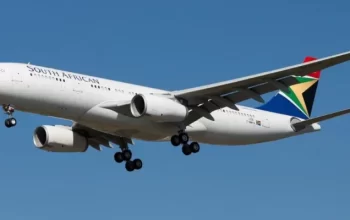Data from the International Air Transport Association (IATA) shows that African airlines experienced the slowest growth in the global air cargo market in October 2024.
The IATA report compares global and regional air cargo traffic and capacity for October 2024 with the same period in 2023.
African carriers contributed just 2% to the global air cargo market, marking a low market share. In October 2024, African airlines saw a modest 1.6% year-on-year increase in air cargo demand, the slowest growth among all regions. However, capacity rose by 7.7%.
Despite outbound air cargo increasing by 8% in H1 2024 compared to H1 2023, and further growing by 9% in September 2024 over the previous year, African air cargo demand lagged.
Notably, North Africa and Southern Africa saw significant growth in outbound traffic, with increases of 23% and 20%, respectively.
IATA’s data highlights the challenge for African carriers in fully utilizing available cargo capacity. While the region’s capacity expanded, the demand did not keep pace.
Global Performance by Region:
- Asia-Pacific: 13.4% growth in demand, with a 9.3% increase in capacity.
- North America: 9.5% growth in demand, with a 5.8% increase in capacity.
- Europe: 7.6% growth in demand, with a 3.9% increase in capacity.
- Middle East: 4.5% growth in demand, with a 0.8% increase in capacity.
- Latin America: 18.5% growth in demand, with a 5.8% increase in capacity (the strongest growth among all regions).
The total cargo traffic market share by region for carriers in terms of cargo tonne-kilometers (CTK) is as follows:
- Asia-Pacific: 33.3%
- North America: 26.9%
- Europe: 21.4%
- Middle East: 13.5%
- Latin America: 2.8%
- Africa: 2.0%
The largest contributors to the industry’s annual cargo growth were Asia-Pacific carriers, followed by North American carriers, which took second place for the first time since August 2023.
Together, these regions contributed 46.1% and 26%, respectively, to the industry’s 9.8% year-on-year growth.
This growth has been driven by rising e-commerce demand in the US and Europe, coupled with ongoing capacity constraints in ocean shipping.




